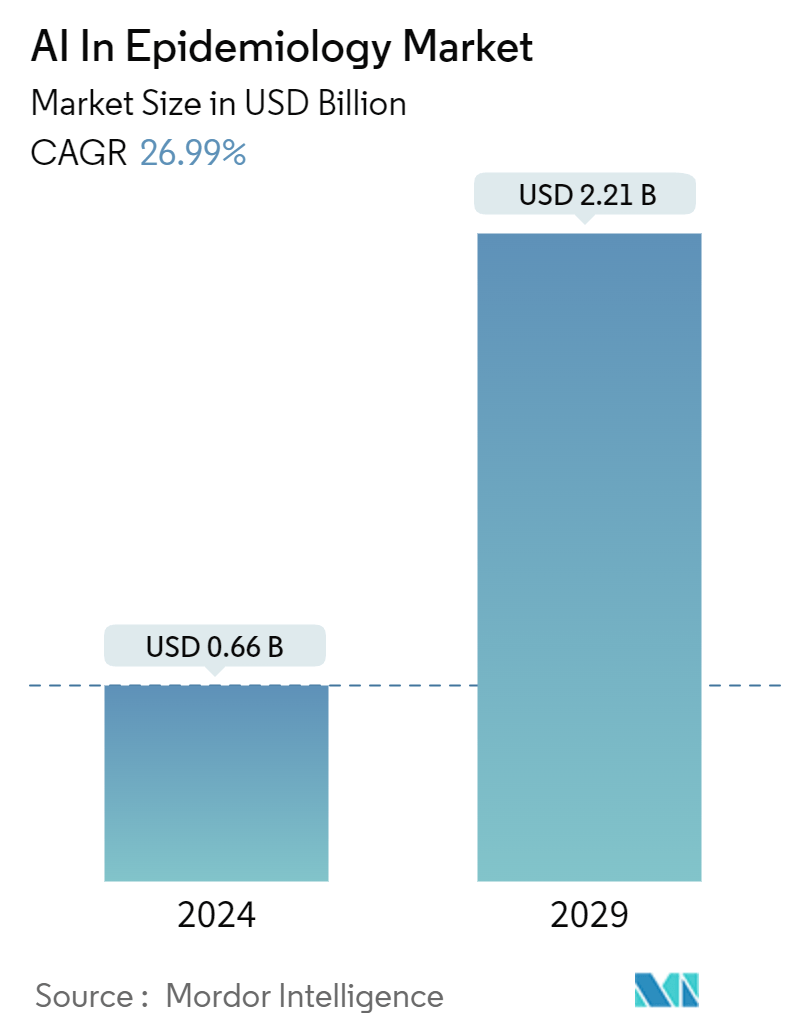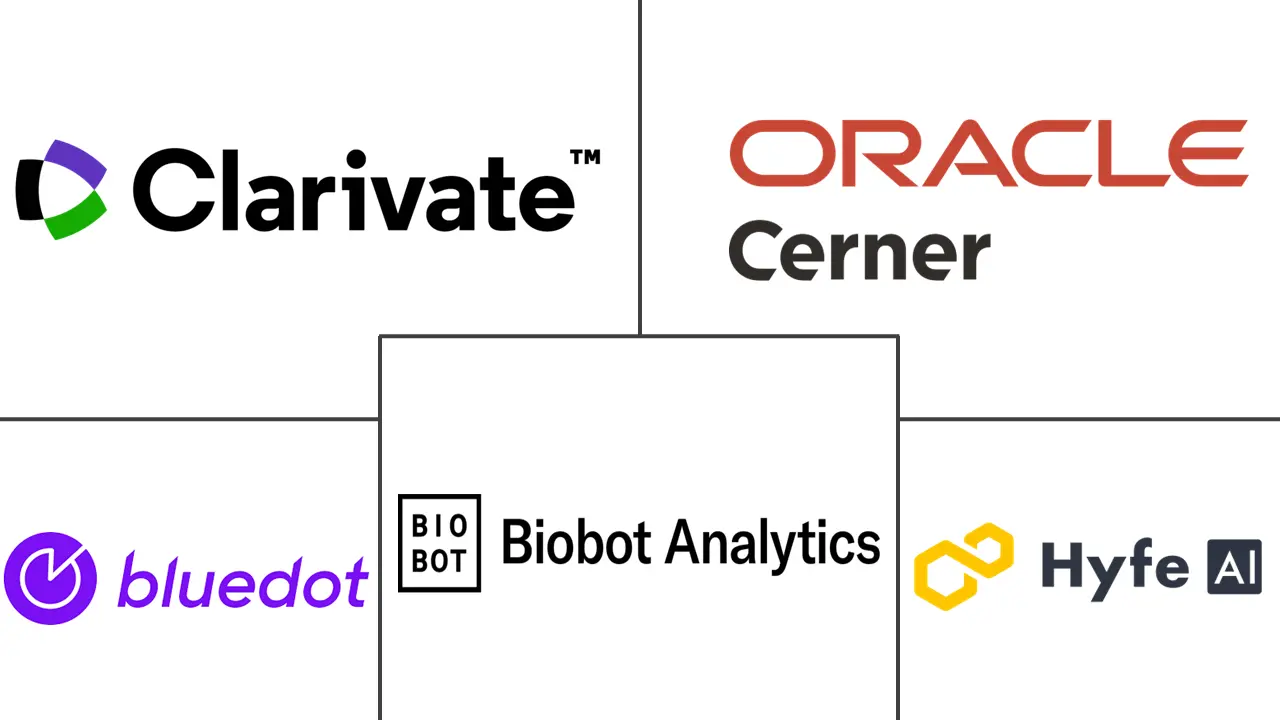Market Size of AI In Epidemiology Industry

| Study Period | 2019 - 2029 |
| Market Size (2024) | USD 0.66 Billion |
| Market Size (2029) | USD 2.21 Billion |
| CAGR (2024 - 2029) | 26.99 % |
| Fastest Growing Market | Asia Pacific |
| Largest Market | North America |
| Market Concentration | Medium |
Major Players
*Disclaimer: Major Players sorted in no particular order |
AI In Epidemiology Market Analysis
The AI In Epidemiology Market size is estimated at USD 0.66 billion in 2024, and is expected to reach USD 2.21 billion by 2029, growing at a CAGR of 26.99% during the forecast period (2024-2029).
The major factors driving the market are the increasing technology advancements in epidemiology, increasing investment in research and development, the growing prevalence of chronic diseases along with the rising geriatric population, clinical advantages offered by artificial intelligence in epidemiology studies, and increasing government initiatives to improve the adoption of AI in epidemiology studies.
The increasing technological advancements in epidemiology are expected to optimize disease surveillance to plan and evaluate strategies to prevent illness and as a guide to managing patients in whom the disease has already developed, driving the market over the forecast period. For instance, in May 2024, SORA Technology and the Institute Pasteur du Cambodge (IPC) collaborated to launch AI for infectious disease control. This project includes a digital surveillance system for infectious diseases transmitted by mosquitoes in Cambodia, using drones and AI to detect and monitor the habitats of the larvae. The launch of such technologically advanced projects for the more effective surveillance of infectious diseases is expected to increase the demand for artificial intelligence in epidemiology studies, driving market growth over the forecast period.
Clinical advantages offered by artificial intelligence in epidemiology studies are also expected to increase the utilization of AI technologies in disease surveillance, driving market growth over the forecast period. For instance, according to an article published in the Vaccines Journal in July 2023, AI offers a significant advantage over traditional disease surveillance methods due to its ability to predict future outbreaks, empowering public health officials to take proactive and preventive measures at an early stage. Moreover, AI-based systems dynamically learn from new data, continuously improving their predictive accuracy, thereby enhancing the effectiveness of disease surveillance. Hence, the clinical advantages offered by artificial intelligence in epidemiology are expected to drive the market’s growth over the forecast period.
Increasing investments in developing AI solutions that can be used in epidemiology studies are also expected to boost the market’s growth over the forecast period. For instance, in May 2022, Epiwatch, an AI epidemic surveillance service based at UNSW Australia, received a more than USD 5 million grant from Vitalik Buterin, the co-founder of the cryptocurrency Ethereum. Such investments are expected to increase the adoption of artificial intelligence in epidemiology studies, which will ultimately drive market growth over the forecast period.
Thus, the increasing technological advancements in epidemiology, growing clinical advantages of AI in epidemiology, and increasing investments in the development of new AI technologies that can used in disease surveillance are expected to drive market growth during the forecast period. However, security concerns about patient data are expected to restrain market growth.

